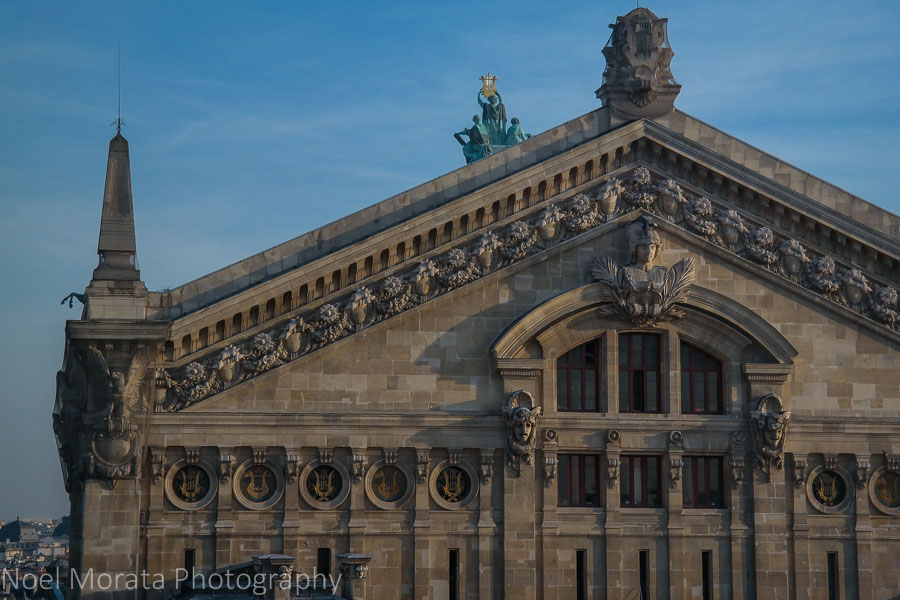


Garnier designed the succession of spaces for the sole purpose of conditioning the future spectators. The steps and the covered gallery with arcades and cupolas flat on pendants supporting the loggia form the starting point, from the south main entrance, of an initiatory journey whose culmination is none other than the great hall and the show which sticks to it. The lyric drama of Jean-Joseph Perraud (with his agonizing victim). The Dance of Jean-Baptiste Carpeaux, whose naked characters provoked the ire of the Puritans (a stranger went so far as to throw an inkwell on the artist’s masterpiece on the night of the 26th. The instrumental music of Eugène Guillaume (with his musical instruments) The poetry of François Jouffroy (with his palms) The four main groups on the front are from left to right:

Garnier himself chose the fourteen painters, the mosaicists and the seventy-three sculptors, including the famous Jean-Baptiste Carpeaux, to participate in his ornamentation. Its skilful layout and proportions, as well as its rich polychromy, express in a skilful synthesis the essence of eclectic architecture. It is, in a way, the manifesto of the artist. The large facade, overlooking the Place de l’Opera and located at the crossroads of many Haussmannian breakthroughs, serves as a backdrop to the perspective of the avenue that will open a little later. The façade of the Opera used seventeen different kinds of material, arranged in very elaborate multicolored marble friezes, columns, and lavish statuary, many of which portray deities of Greek mythology. Garnier used polychromy, or a variety of colors, for theatrical effect, achieved different varieties of marble and stone, porphyry, and gilded bronze.

The façade and the interior followed the Napoleon III style principle of leaving no space without decoration. These were combined with axial symmetry and modern techniques and materials, including the use of an iron framework, which had been pioneered in other Napoleon III buildings, including the Bibliotheque Nationale and the markets of Les Halles. The opera was constructed in what Charles Garnier (1825-1898) is said to have told the Empress Eugenie was “Napoleon III” style The Napoleon III style was highly eclectic, and borrowed from many historical sources the opera house included elements from the Baroque, the classicism of Palladio, and Renaissance architecture blended together.


 0 kommentar(er)
0 kommentar(er)
